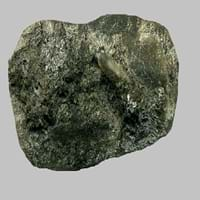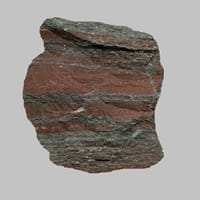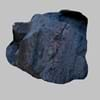Kenyte and Jaspillite
Definition
Definition
Kenyte is a variety of porphyritic phonolite or trachyte rock with rhomb shaped phenocrysts of anorthoclase with variable olivine and augite in a glassy matrix
Jaspillite is an iron rich chemically formed rock which is common in banded iron formation rocks
History
Origin
Mount Kenya
Western Australia, Minnesota
Discoverer
J. W. Gregory
Unknown
Etymology
From the mountain ranges- Mount Kenya and is named by J. W. Gregory in 1900
From Jaspilite (Mineral), a compact siliceous rock which resembles jasper
Class
Igneous Rocks
Sedimentary Rocks
Sub-Class
Durable Rock, Medium Hardness Rock
Durable Rock, Soft Rock
Family
Group
Not Applicable
Not Applicable
Other Categories
Fine Grained Rock, Opaque Rock
Coarse Grained Rock, Opaque Rock
Texture
Texture
Glassy, Granular
Banded, Trellis
Color
Brown, Buff, Cream, Green, Grey, Pink, White
Red, Reddish Brown
Maintenance
More
Less
Durability
Durable
Durable
Water Resistant
Yes
No
Scratch Resistant
Yes
No
Stain Resistant
No
No
Wind Resistant
No
No
Acid Resistant
No
No
Appearance
Banded and Foilated
Banded and Glassy
Uses
Architecture
Interior Uses
Decorative Aggregates, Entryways, Homes, Interior Decoration, Kitchens
Decorative Aggregates, Interior Decoration
Exterior Uses
As Building Stone, Garden Decoration, Paving Stone
As Facing Stone, Garden Decoration, Paving Stone
Other Architectural Uses
Curbing
Curbing
Industry
Construction Industry
As Dimension Stone, Cement Manufacture, Construction Aggregate, for Road Aggregate, Landscaping, Making natural cement, Manufacture of Magnesium and Dolomite Refractories, Production of Glass and Ceramics
As a Flux in the Production of Steel and Pig Iron, As a Sintering Agent in Steel Industry to process Iron Ore, As Dimension Stone, Cement Manufacture, for Road Aggregate, Making natural cement, Manufacture of Magnesium and Dolomite Refractories
Medical Industry
Not Yet Used
Not Yet Used
Antiquity Uses
Artifacts, Monuments, Sculpture
Artifacts, Jewellery, Monuments
Other Uses
Commercial Uses
Cemetery Markers, Creating Artwork
Creating Artwork, Jewelry
Types
Types
Not Available
Algoma-type , Lake Superior-type and Superior-type
Features
Application of acids on the surface causes cloudy frosting, Available in Lots of Colors and Patterns, Dissolves in hydrochloric acid, Is one of the oldest rock
Is one of the oldest rock
Archaeological Significance
Monuments
Used
Used
Famous Monuments
Data Not Available
Data Not Available
Sculpture
Used
Not Yet Used
Famous Sculptures
Data Not Available
Not Applicable
Pictographs
Used
Used
Petroglyphs
Used
Used
Figurines
Used
Not Yet Used
Fossils
Absent
Present
Formation
Formation
Kenyte is a fine-grained, hard rock which is a type of metasomatite, essentially altered basalt. It forms with or without crystallization, either below the surface as intrusive rocks or on the surface as extrusive rocks.
Jaspillite is a type of sedimentary rock which is formed by the compaction and sedimentation of pieces of broken or weathered rocks and minerals.
Composition
Mineral Content
Albite, Amphibole, Biotite, Cancrinite, Feldspar, Hornblende, Plagioclase, Pyroxene, Sodalite
Coesite, Quartz, Sand
Compound Content
Aluminium Oxide, CaO, Iron(III) Oxide, FeO, Potassium Oxide, MgO, MnO, Sodium Oxide, Phosphorus Pentoxide, Silicon Dioxide, Titanium Dioxide
Fe, Iron(III) Oxide, Silicon Dioxide
Transformation
Metamorphism
Yes
No
Types of Metamorphism
Burial Metamorphism, Cataclastic Metamorphism, Impact Metamorphism
Not Applicable
Weathering
Yes
Yes
Types of Weathering
Biological Weathering
Biological Weathering, Chemical Weathering
Erosion
Yes
Yes
Types of Erosion
Chemical Erosion, Coastal Erosion
Chemical Erosion, Coastal Erosion
Properties
Physical Properties
Hardness
5.5-6
3
Grain Size
Fine Grained
Large and Coarse Grained
Fracture
Conchoidal to Uneven
Conchoidal
Streak
White, Greenish White or Grey
White
Porosity
Highly Porous
Very Less Porous
Luster
Greasy to Dull
Earthy
Compressive Strength
150.00 N/mm2
14
230.00 N/mm2
6
Cleavage
Poor
Imperfect
Toughness
Not Available
Not Available
Specific Gravity
2.6
5.0-5.3
Transparency
Translucent to Opaque
Translucent to Opaque
Density
2.6 g/cm3
0-5.7 g/cm3
Thermal Properties
Specific Heat Capacity
Not Available
3.20 kJ/Kg K
1
Resistance
Heat Resistant, Impact Resistant, Wear Resistant
Heat Resistant, Impact Resistant, Wear Resistant
Reserves
Deposits in Eastern Continents
Asia
Indonesia, Iran, Russia, Saudi Arabia, Sri Lanka, Taiwan, Thailand, Turkey, Turkmenistan, Vietnam
Russia
Africa
Angola, Egypt, Madagascar, Namibia, Nigeria, South Africa
Not Yet Found
Europe
Andorra, Finland, France, Germany, Great Britain, Italy, Norway, Portugal, Spain, Sweden
Ukraine
Others
Greenland
Not Yet Found
Deposits in Western Continents
North America
Canada, USA
Canada, USA
South America
Brazil, Chile, Colombia, Uruguay, Venezuela
Brazil
Deposits in Oceania Continent
Australia
New Zealand, Queensland, South Australia, Tasmania, Western Australia
Western Australia
All about Kenyte and Jaspillite Properties
Know all about Kenyte and Jaspillite properties here. All properties of rocks are important as they define the type of rock and its application. Kenyte belongs to Igneous Rocks while Jaspillite belongs to Sedimentary Rocks.Texture of Kenyte is Glassy, Granular whereas that of Jaspillite is Banded, Trellis. Kenyte appears Banded and Foilated and Jaspillite appears Banded and Glassy. The luster of Kenyte is greasy to dull while that of Jaspillite is earthy. Kenyte is available in brown, buff, cream, green, grey, pink, white colors whereas Jaspillite is available in red, reddish brown colors. The commercial uses of Kenyte are cemetery markers, creating artwork and that of Jaspillite are creating artwork, jewelry.
|
||
|
||
|










